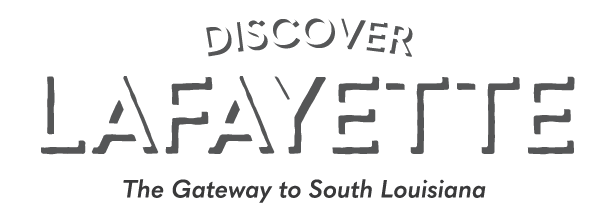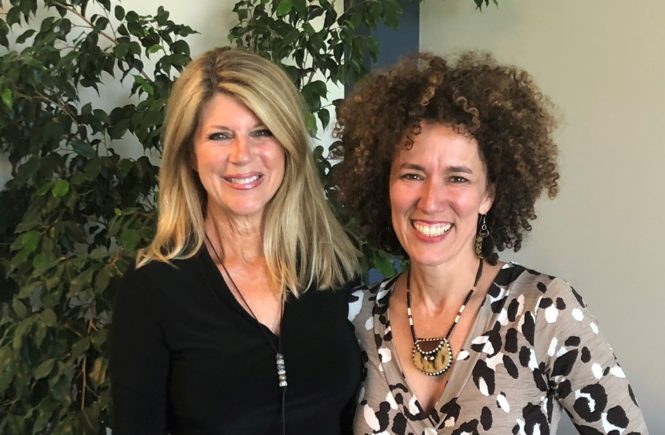Podcast: Play in new window | Download (Duration: 1:05:36 — 150.1MB)
Catherine Schoeffler Comeaux is passionate about reducing and eventually eliminating the never-ending piles of trash generated both locally and globally. In this episode of Discover Lafayette, she speaks with Jan Swift in a humorous and non-preachy style, yet it is abundantly clear that she walks the walk in her efforts to bring about a zero waste society.
Catherine was a founding member of No Waste Louisiana along with Amanda Waddle and both women were instrumental in getting the Lafayette Parish School System to implement recycling in schools. Catherine realized that recycling, while helpful, is not the answer to the growing piles of waste. She is working to change mindsets and jokingly stated that beyond “reduce, reuse and recycle”, there are so many ways to eliminate waste such as repair, redesign products, rethink, refill, and be responsible.
While stressing practicality of living your daily life, one of the best things we can all do to reduce waste is to eliminate the use of single-use plastics such as cups and plastic bags. The point of recycling is not to recycle “more,” but to recycle better by being mindful of our daily practices of consumption.
All of Lafayette’s recycling is sent to Baton Rouge. Paper, aluminum, and plastics are sorted by machines and ultimately humans. Catherine shared that unusual items such as weapons, bowling balls, mannequins, diapers, and dead animals are plucked out of the recycling by workers. “Contaminated recycling” is a problem; we should not include plastic bags in our recycling nor containers which have food or liquids on them.
No Waste Louisiana is an environmental education organization that works with individuals, businesses, and governments to reduce needless and avoidable waste. Front-end litter prevention is the focus, and they are hopeful to begin recognizing businesses that utilize green practices such as eliminating the use of plastics and other disposables. They also promote a “fix-it” culture to encourage people to fix their possessions rather than tossing them in the trash. No Waste Lafayette is hosting a Summer Fix It Cafe on July 27, 2019, 10 a.m. to 1 p.m. at the Lafayette Public Library downtown where “fixers” will be available to assess and repair bikes, household goods, electronics, clothing, jewelry, and furniture.
Catherine spoke of the need for extended producer responsibility by the manufacturers of products. It takes legislation to encourage manufacturers to make their goods last longer or design them to be able to be broken down easily and recycled. The end goal is to have producers add all the environmental costs associated with a product through the product life cycle and focus on what happens to the product at the end of use. It prods manufacturers to accept their responsibility when designing products to minimize life-cycle environmental impacts and hopefully redesign to make a more durable good. An example is a Louisiana law that requires retail and wholesale sellers of lead-acid batteries to accept used batteries when a new one is purchased.
Latex paint is one of the most commonly brought goods to LCG’s Household Hazardous Waste Day. LCG partners with Habitat for Humanity’s ReStore to reblend the paints for sale at the store. Catherine stressed that while this is a wonderful way to repurpose unused paint, we could also share our paint with friends who may be happy to use it in their own home projects. About 10% of unused paint goes unused each year in the U. S. (80 million gallons) and as a result, paint stewardship laws are in effect in about thirteen states which call upon paint manufacturers to to assist with repurposing the paint, putting it back in circulation, and minimize involvement of local governments tasked with managing post-consumer paint by reducing the amount generated.
LSU Department of Oceanography & Coastal Sciences Professor Mark Benfield is studying microplastics (pieces of plastic no larger than a Mardi Gras bead) that begin as trash in the Mississippi River and end up in the Gulf of Mexico. These microplastics originate from a variety of sources such as bottles, bags, synthetic fabric lint from laundry, rubber tires and toothpaste. The concentration of microplastics in the Gulf is the highest in the world and unfortunately, are similar in size to zooplankton which fish eat. The plastics act as an attractant to chemicals in the water which causes hormonal problems in the fish, which are a part of the food chain of larger fish that humans eventually eat. There are no longterm findings on the health aspects of consuming plastics and Benfield is conducting further research to determine the ultimate effect plastic pollution may have upon humans. Similar research has been conducted on the Mediterranean Sea and to curb waste, Europeans have limited the use of plastic bags and encourage recycling.
The “zero waste community” has the goal of producing no waste that would go in a landfill or be disposed of by burning. Catherine says it is a mindset: “If I have to throw it away, I’m probably not taking appropriate efforts to compost it or the product is not designed well. And, the goal of zero waste is necessary, as just cutting back on waste here and there will not result in a sustainable future worldwide. For more information on the Zero Waste International Waste Alliance, visit http://zwia.org/.
This interview is full of information that can help all of us be better stewards of our communities and the planet. Thank you Catherine Comeaux for your commitment to making our world a better place!




